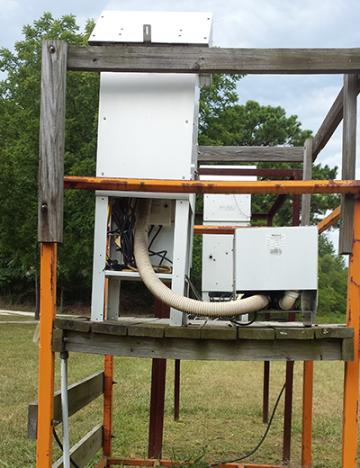The Oates air monitoring station is located near the Doe Run Company's secondary lead smelter, a plant in Boss that recycles lead from batteries and other products. It is also near two lead ore-processing facilities operated by Doe Run near the lead-rich Viburnum Trend in southeast Missouri. These lead deposits weren't discovered until some time in the 1950s-1960s. The mines and mills that operate in the vicinity of the Viburnum Trend encompass the new lead belt. The old lead belt lies north of the Viburnum Trend, and it included the Herculaneum primary lead smelter, which closed in 2013. Doe Run now sends mined ore to its primary smelter overseas.
The Oates air monitor helps determine exposure of a population segment to airborne lead resulting from those sources. Operated by the state, the air monitoring station takes its name from the unincorporated area in which it is located.
Pollutants
Lead
The primary and secondary ambient air standards for lead have remained at 0.15 micrograms per cubic meter since 2008. The primary standard reflects EPA's concern for public health while the second standard demonstrates concern for public welfare. EPA bases the standard on the highest rolling three-month average over a period of three years and two months. A monitoring site meets the standard when this rolling three-month average is less than or equal to 0.15 μg/m3.
Departmental information about lead
- Health effects
- Missouri's lead legacy
- 2008 standard and pertinent documents
- Three-month average lead concentrations for the most recent 12 months
- State map with monitors for lead in ambient air
Technical issues can affect ability to deliver quality data. Access a table of symbols with explanation of the problems they represent.

13155 Highway KK
Boss, MO 65440
United States
Air Pollution Control Program
Division of Environmental Quality
P.O. Box 176
Jefferson City, MO 65102-0176
United States
